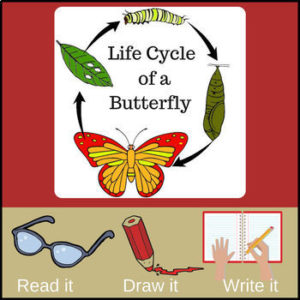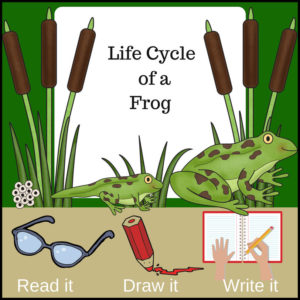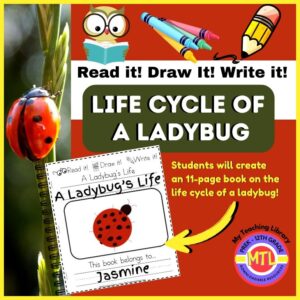Category: Read it Write it Draw it
- Home
- /
- Shop
- /
- By Subject
- /
- Language Arts
- /
- Writing
- /
- Read it Write it Draw it
Showing all 3 resultsSorted by latest
-
 $2.00Buy Now
$2.00Buy NowThis Science – Language Arts resource with have students creating their very own mini-book of the life cycle of a butterfly!
Knowledge students will learn: The book will begin with the butterfly laying an egg on a leaf and continue as a caterpillar begins to grow in the egg, hatches and begins to eat. Students will learn what the caterpillar eats and that it is a type of larva. As the book progresses, students will write about the caterpillar building a cocoon and it’s life as a pupa (and a chrysalis) before emerging as a beautiful butterfly!
On each page, students will … read the text, draw a picture and then write (copy) the written text.
-
 $2.00Buy Now
$2.00Buy NowThis cross-curricular (Science / Literacy – Writing ) product will have students creating their very own mini-books detailing the life cycle of a frog!
Knowledge students will learn:
The book will begin with the female frog laying her eggs near or in water. Students will then learn about the tadpole, what it looks like and what it eats and how it grows and turns into a froglet. They will learn how the froglet has developed the ability to breathe and live on land and then turns into a frog. Does a frog eat different things than a tadpole? Students will find out! At the end of the unit, there is also a coloring page of the different stages from egg to frog.
Students will: — read the text — draw a picture — write (copy) the written text
-
 $3.50Buy Now
$3.50Buy NowA cross-curricular (Science / Literacy – Writing) product that will have students creating their very own mini-books detailing the life cycle of a ladybug!
Knowledge students will learn:
- -The ladybug is a beetle
- -Mother ladybugs lay tiny yellow eggs in clusters under a leaf
- -When the larva hatches, it eats. What do ladybugs eat? Students will find out!
- -What the ladybug pupa looks like before attaching itself to a leaf
- -The pupa grows, molts and changes…emerging as a ladybug!
Students will:
- -Read the text
- -Draw a picture
- -Write (copy work) the written text.
Benefits of this resource:
- -Low prep – print and give to students
- -Children learn about the ladybug life cycle while reading, drawing and writing
- -Encourages fine motor skills through coloring and writing plus scissor skills as the cut out each page along the dotted lines
- -Encourages reading skills as students read and copy the text
- -Finished book can be a keepsake Science mini-book and added to end-of-the-end portfolio.
What is included? 11 ready-to-use student pages
⭐⭐Use along or with: Ladybug Life Cycle | Posters and Worksheets

